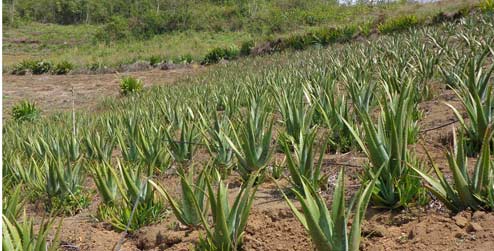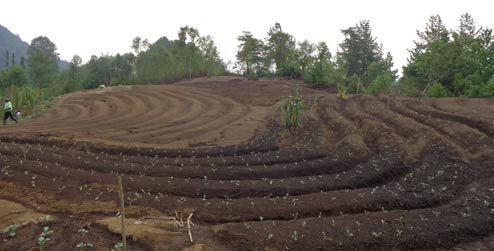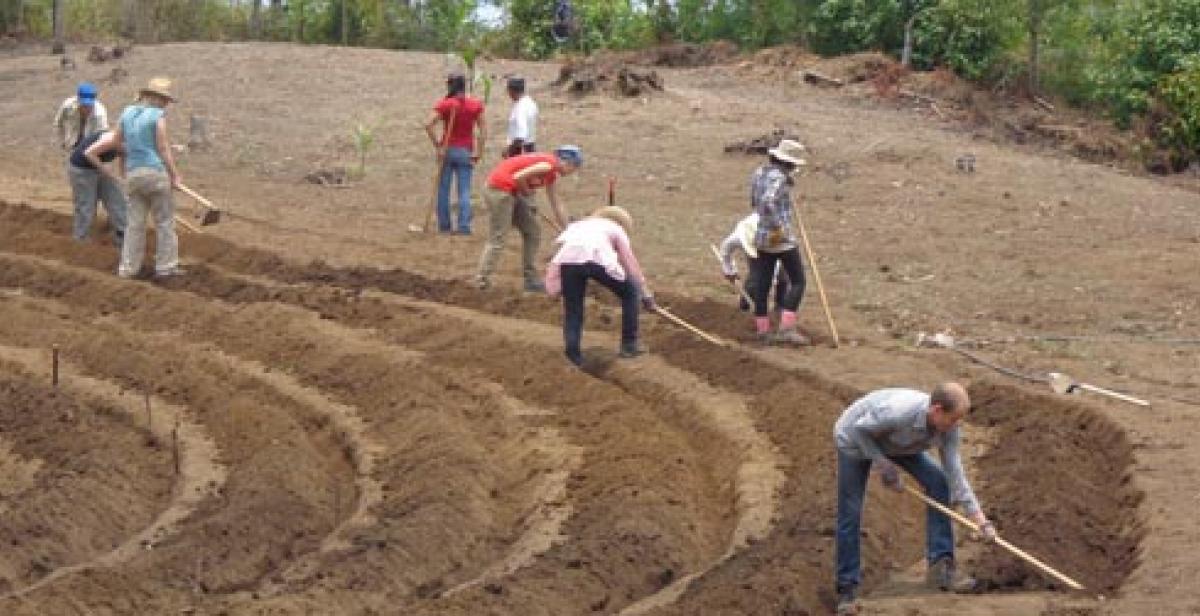As a group we recently visited a local farm, owned and managed by a gentleman called Catalino and his family. Catalino works in integral farming, where the waste of the farm is used as a resource, saving money and contributing towards environmental protection. Even the waste of the farm’s pigs is put to good use in the making of gas for the kitchen, with any plants which would otherwise have no use made into fertiliser. What is more, Catalino’s wife is a member of a local cooperative through which they spread their knowledge and experience in the hope that the people of Marcala can themselves work towards integral farming and, alongside it, higher efficiency, bigger profits and environmental benefits. The impact of the investment put into Catalino’s farm alongside his knowledge was glaringly obvious the moment we arrived: the farm is more advanced than any others we have seen, using more sophisticated and efficient farming methods, its beds clean, organised and bursting with high quality crops.
It is this ideal which Progressio is aiming for with the rural female headed households they work with. These women and their families work alongside Progressio development workers whose aim is to empower the women to improve their quality of life by enhancing the efficiency of their farms. Although integral farming is the eventual aim of Progressio and its development workers, this is often a slow process and so the short-term focus instead is on the adaptation of current farming methods to improve efficiency and profitability. This is where the ICS volunteers come in: we work with development workers on the farms of local women to kick-start a more sustainable and efficient way of farming.

For most of our time so far in Marcala we have been working with a member of the COOMUPL cooperative, Doña Adela, on her ‘finca’, a small area of farming land. Her plot of land is located as much as a thirty minute walk from her house, in rural Marcala amongst dirt roads and forests. On our first visit it was small and overgrown, planted entirely with carrots which as we harvested we realised were far too small and under grown to be sold for any significant profit or, in many cases, to even be eaten in Adela’s house by herself and her family. The first two days at the finca were spent harvesting the crops and cleaning the field of its stubborn weeds alongside Roger Diaz, a Progressio development worker. Cleaning the field is a slow task without the machinery which the farmers of England are accustomed to. After having cleared the field of both its weeds and crops the task was to create a whole new design for the field, allowing Adela to produce both higher yields and better quality crops. The whole field and its beds were broken up by us alongside Adela, her family and Roger, an entire neighbouring field cleared of crops and its soil turned to almost double the size of the finca. We created tens of new crop beds, designed especially to allow water to flow to every part of the bed allowing for better quality crops. We were helped at this point by Catalino who, using just an A-Frame, planned out the design of the new, extended field in partnership with Roger. Following this process was of course the planting of new crops: this time not only carrots, but also cabbage and broccoli, so that Adela’s dependence was not solely on the success of one crop.

Over the past weeks we have been able to watch the transformation of Adela’s overgrown, underproductive farm into a bigger, more productive and more efficiently designed plot of land, with the knowledge that we have helped to create something new and contributed to the lives of a family in a hidden part of rural Marcala. Having almost completed the new farm, we will leave with the hope that the work we have begun will be sustained and will give way to a more efficient and productive method of farming for Adela and her family.
Blog written by Emma Justice
Photos by Emma Justice and Peter Teasdale
Photo 1: The team creating new beds at Adela’s finca
Photo 2: Aloe Vera plants at Catalino’s integral farm
Photo 3: The new design of Adela’s finca



